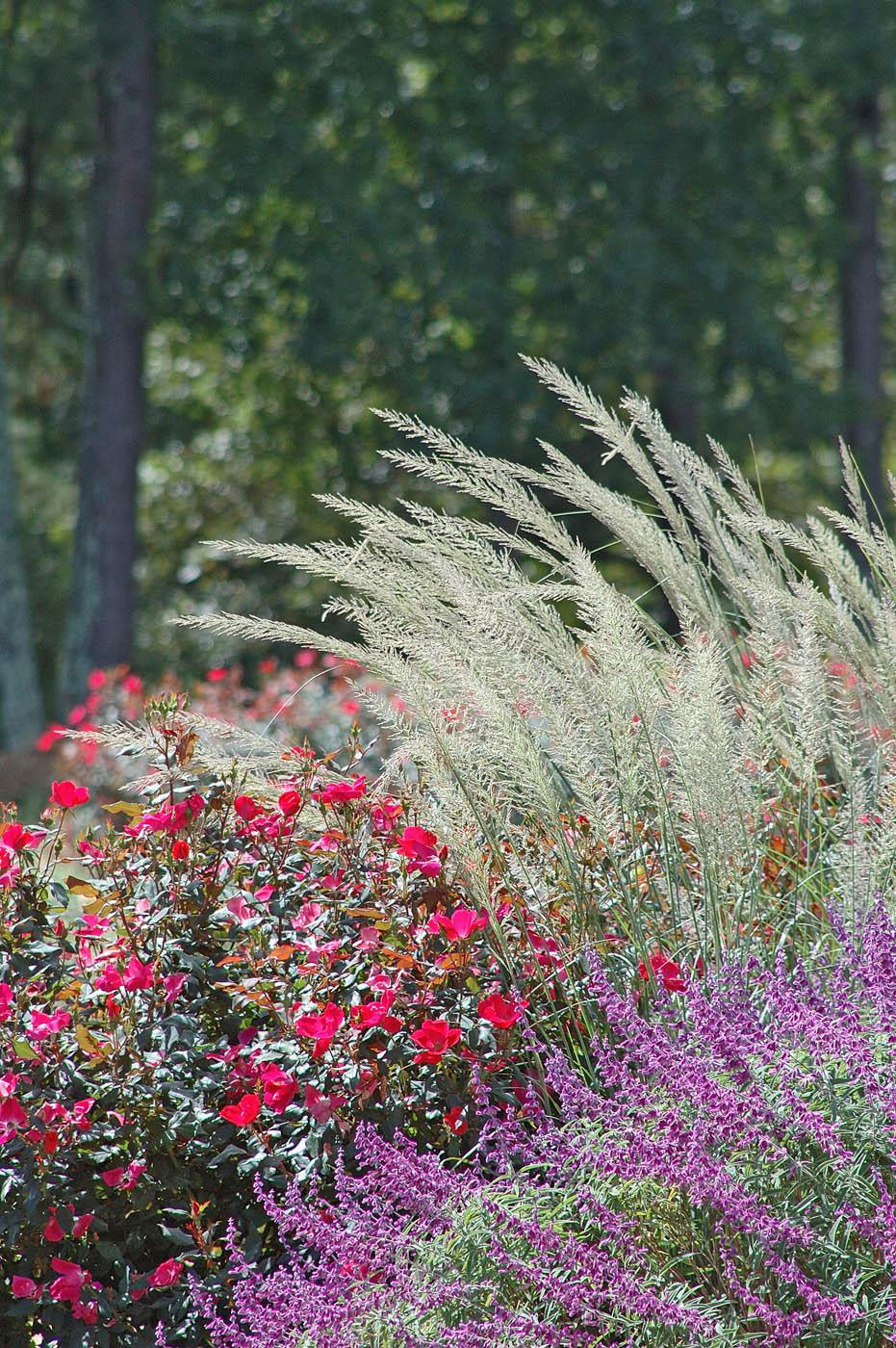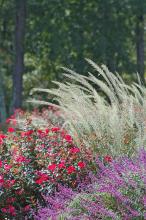Information Possibly Outdated
The information presented on this page was originally released on October 23, 2008. It may not be outdated, but please search our site for more current information. If you plan to quote or reference this information in a publication, please check with the Extension specialist or author before proceeding.
Muhly grasses offer dazzling fall display
By Norman Winter
MSU Horticulturist
Central Mississippi Research & Extension Center
Muhly grasses native to the southern United States offer dazzling performances for the fall landscape. One of the most picturesque is commonly called Lindheimer's muhly, or blue muhly.
The blue-gray-green color and fine leaf texture would make this grass a winner even if it never bloomed. But it does, sending up plumes on 4-foot-tall plants. The blossoms begin as a creamy pink that turns whiter and finishes tan.
No matter where you go in the country, it seems gardeners want more drought-tolerant plants; the Lindheimer's muhly certainly falls in this category. It is generally considered cold hardy from zone 6-10. In Mississippi State University trials, we partnered it with Knock Out roses and Kathy Ann Brown Mexican bush sage. This makes quite a fall display.
Another terrific muhly choice is the Gulf Coast muhly, or pink muhly, known botanically as Muhlenbergia capillaris. This grass absolutely mesmerizes those who see its cotton candy-like blooms. A white variety called White Cloud looks like cumulus clouds 4 feet off the ground. Like the Lindheimer's muhly, it too is cold hardy to zone 6.
Both pink and white muhly grasses reach about 4 feet tall and look at home in any kind of garden. Grow them in beds with deep pink or red shrub roses. Place them in front of other grasses, such as purple fountain or black bamboo. Muhly grass looks great with Clara Curtis or Country Girl chrysanthemums.
While specimen plantings are exceptional, try grouping three together for an especially showy partnership. All of these grasses look incredible when backlit by the sun. The kiss of dew in the morning can make pink or white muhly grass look like giant spider webs until it dries.
To grow these muhly grass selections, choose a site in full sun with fertile, organic-rich soil. Amend the soil as needed with 3 to 4 inches of organic matter like compost or humus. Till to a depth of 8 to 10 inches and incorporate 2 pounds of a slow-release 12-6-6 fertilizer.
Dig the planting hole two to three times as wide as the root ball but no deeper. Plant the muhly grass at the same depth it is growing in the container, with the crown slightly above the soil profile. Space plants 24 to 36 inches apart and apply a good layer of mulch after planting.
In late winter, cut the foliage back to about 12 inches tall, or slightly more for the Lindheimer's muhly. Apply a light application of fertilizer when pruning and another one in midsummer. A little supplemental water during prolonged dry periods in the summer will pay dividends with an even more impressive show in the fall. Divide clumps in early spring.
Jump on the grass bandwagon this fall. Muhly grasses are a great place to start. Plant some now, and your envious neighbors will probably accuse you of going to landscape design school.








